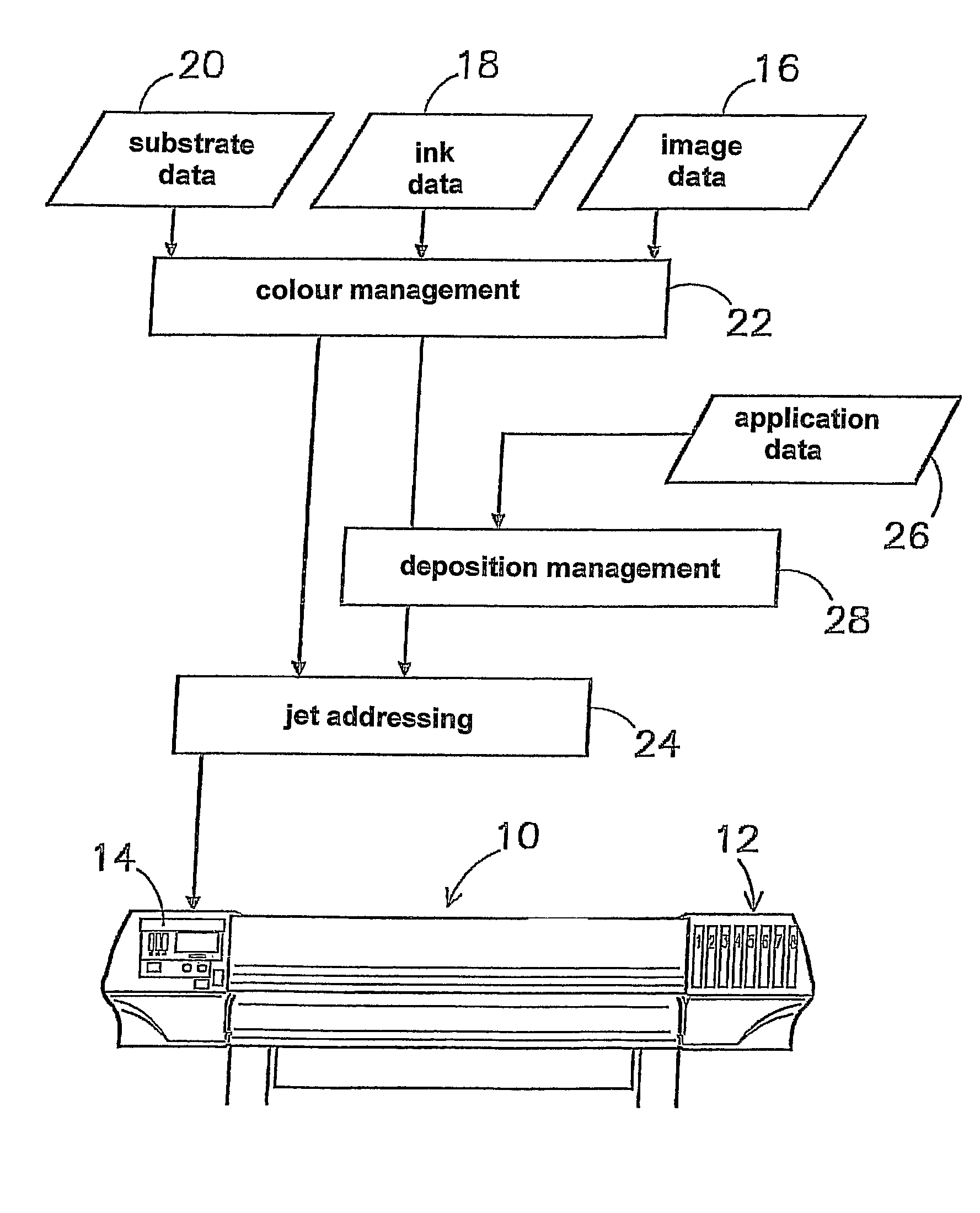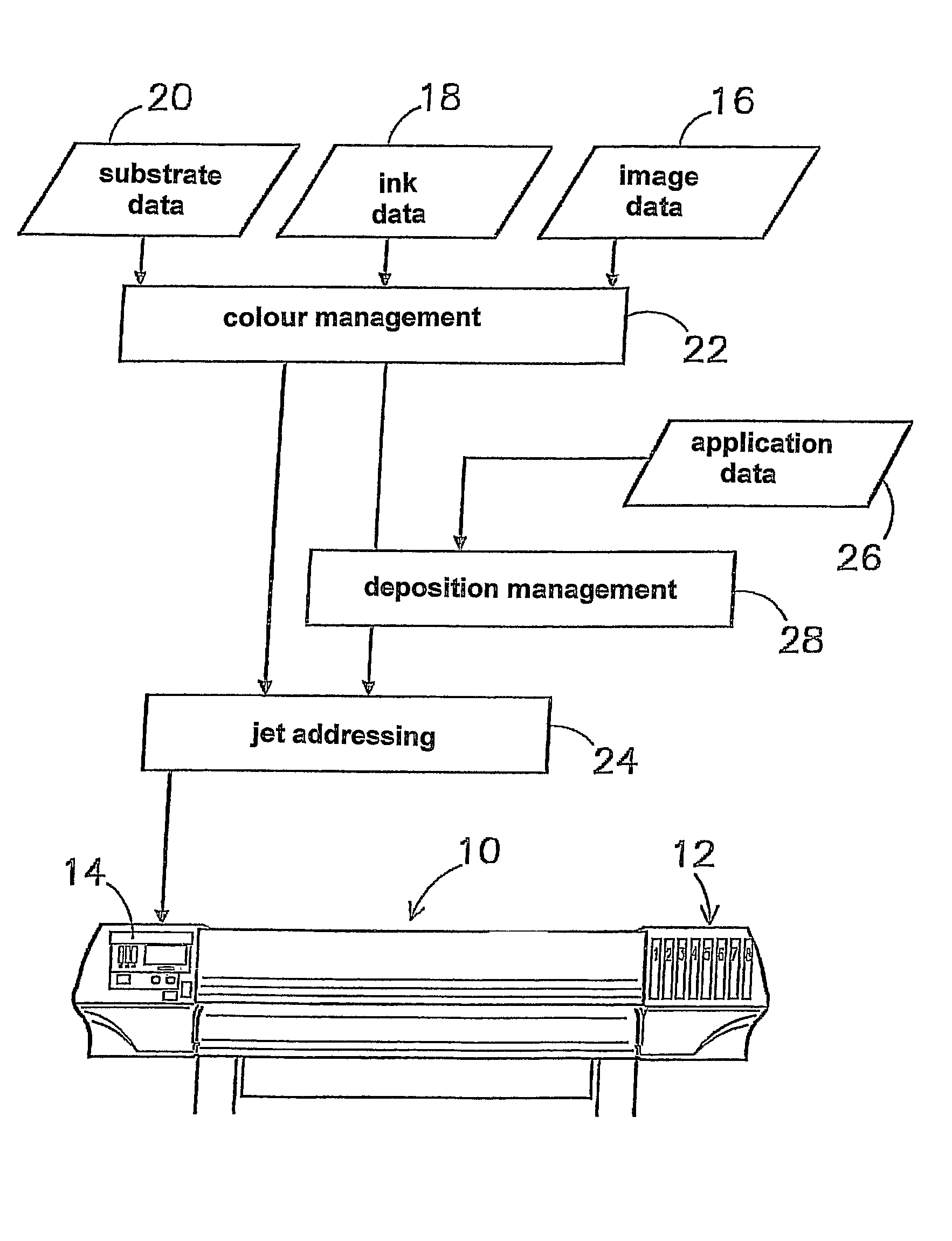Printing method and ink jet printing device
a printing device and inkjet technology, applied in printing, dyeing process, textiles and papermaking, etc., can solve the problems of affecting the light variant of the basic colours, the use of just the basic colours k, c, m and y often produces too limited colour space,
- Summary
- Abstract
- Description
- Claims
- Application Information
AI Technical Summary
Benefits of technology
Problems solved by technology
Method used
Image
Examples
Embodiment Construction
[0065]FIG. 1 shows a standard type of an inkjet printing device 10, which is suitable for printing on wide substrates. This type comprises eight (numbered 1-8) ducts 12, whereof in this case six (121-3 and 126-8) are connected to containers for ink fluids comprising a dye in a main solvent. A duct 124 is connected to a container for transport fluid and a duct 125 is connected to a container for an auxiliary fluid comprising rheology-modifying agents. The ducts 12 are connected to ink nozzles of a print head, which is located on a carriage which can be moved to and fro in the transverse direction (denoted by a double arrow) to the motional direction of the substrate. On the left-hand side, the control device 14 is provided. The control system is explained with reference to the process diagram integrated in this FIGURE. Into the control device 14, the data 16 of the image to be printed, for example as a bit file of the pixel colour values, the data 18 of the used ink fluids and the da...
PUM
| Property | Measurement | Unit |
|---|---|---|
| contact angle | aaaaa | aaaaa |
| contact angle | aaaaa | aaaaa |
| contact angle | aaaaa | aaaaa |
Abstract
Description
Claims
Application Information
 Login to View More
Login to View More - R&D
- Intellectual Property
- Life Sciences
- Materials
- Tech Scout
- Unparalleled Data Quality
- Higher Quality Content
- 60% Fewer Hallucinations
Browse by: Latest US Patents, China's latest patents, Technical Efficacy Thesaurus, Application Domain, Technology Topic, Popular Technical Reports.
© 2025 PatSnap. All rights reserved.Legal|Privacy policy|Modern Slavery Act Transparency Statement|Sitemap|About US| Contact US: help@patsnap.com


